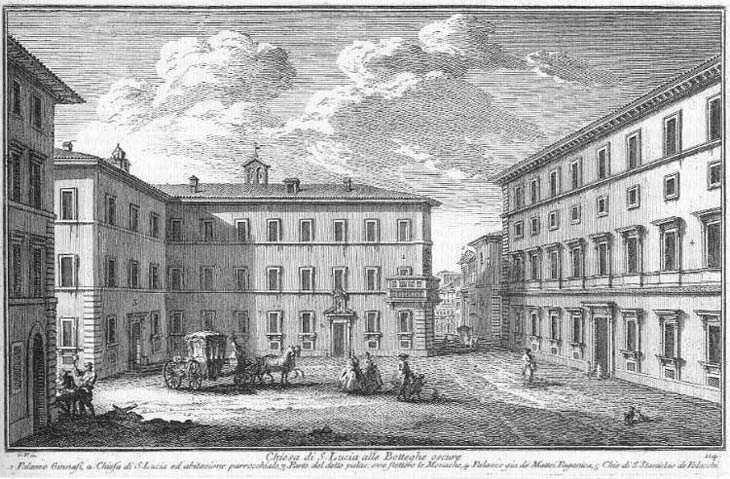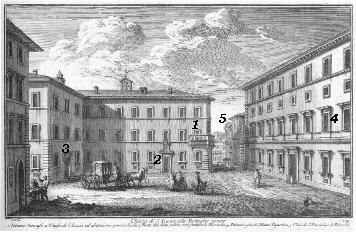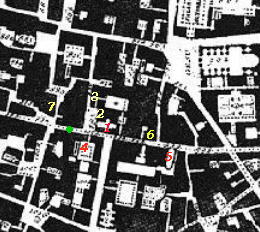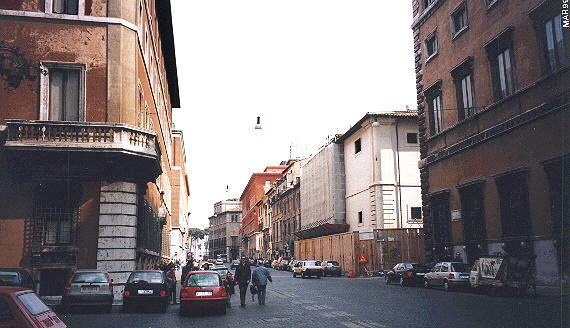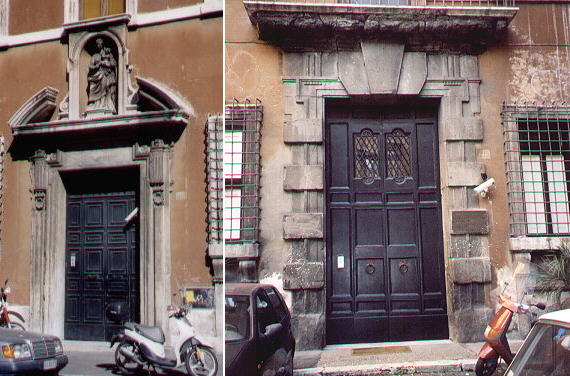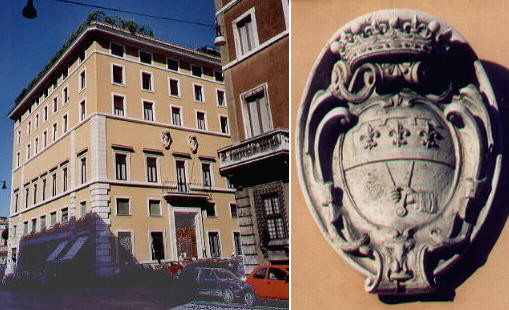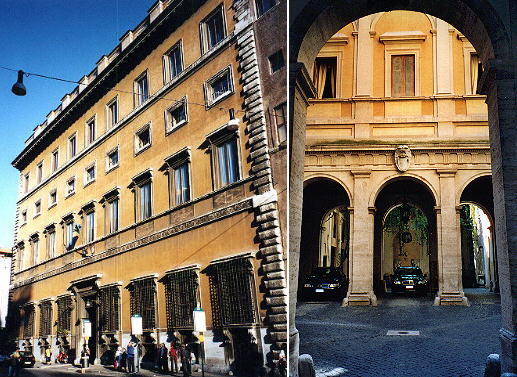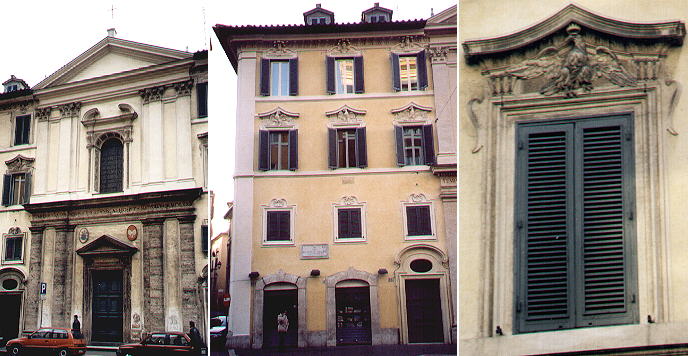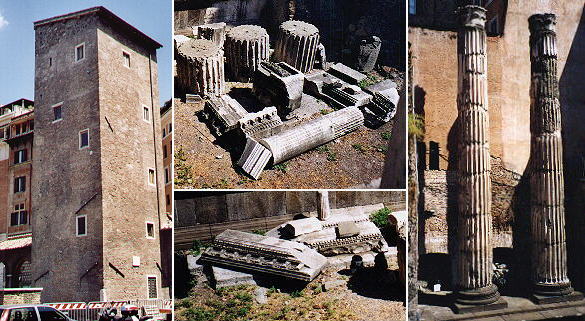  S. Lucia alle Botteghe Oscure (Book 6) (Map C3) (Day 5) (View C8) (Rione Pigna) and (Rione Sant'Angelo) In this page:
The second circus of Rome was Circus Flaminius
and the arcades of its northern side were re-used in medieval times to
get some little shops (Bottega) with a lot of inside space receiving little
light from the entrance so they were obscure (Botteghe oscure). The view is taken from the green dot in the small 1748 map here below.
In the description below the plate Vasi made reference to: 1) Palazzo Ginnasi;
2) S. Lucia; 3) Part of Palazzo Ginnasi once used by the nuns; 4) Palazzo Mattei Paganica, then Caetani; 5) S. Stefano dei Polacchi.
The small map shows also: 6) Porticus Minuciae; 7) Torre del Papitto.
The left side of the street was totally rebuilt in 1937 to get a larger street connecting Largo Argentina with Piazza Venezia. The balcony you see in the plate was added to a new building, which was to some extent similar to the old one.
The entrance to the church of S. Lucia was added to the front of the new building in Via delle Botteghe Oscure. Some of the monuments and the ornaments of the church were moved into a family chapel inside Palazzo Ginnasi which also was pulled down and rebuilt. A part of the palace with a late XVIth century portal was untouched by the enlargement of Via delle Botteghe Oscure.
The Ginnasi became a prominent Roman family at the beginning of the XVIIth century when Domenico Ginnasi was appointed cardinal by Clemens VIII. The lower part of the new palace has some elements in common with the old one. The coats of arms are those which stood on the façade of the old palace.
This palace is called in the plate Palazzo Mattei - Paganica but
was built for the Caetani by Bartolomeo Ammannati in a style very similar
to Palazzo Ruspoli. It shows the simplicity
and elegance of the Florentine Renaissance.
The church of the Polish Nation is today the Sunday meeting point of the large Polish community of Rome. You can see above the entrance the white and crowned Polish eagle on the red background. The main windows of the attached monastery are decorated by the same eagle so I had to pay tribute to Poland by showing this decoration in the background (click here for a list of national churches in Rome). Porticus Minuciae e Torre del Papitto
The excavations to enlarge the street brought to light the ruins of a Roman temple. Two columns
have been re-erected. The god or the goddess of the temple is not clearly known: the temple is
located in a larger complex called Porticus Minuciae. Other excavations in 1929 near Palazzo Cesarini isolated a medieval tower called Torre del Papitto or Torre Persiani. Papitto (small pope)
is most likely a reference to Anacletus II, antipope in 1130-38, a member of the Pierleoni family.
Next plate in Book 6: Chiesa di S. Marco Next step in Day 5 itinerary: Palazzo Mattei You have completed your tour of Rione Pigna!!! Next step in your tour of Rione Sant'Angelo: Palazzo Mattei
Go
to |
All images © 1999 - 2003 by Roberto Piperno. Write to romapip@quipo.it
